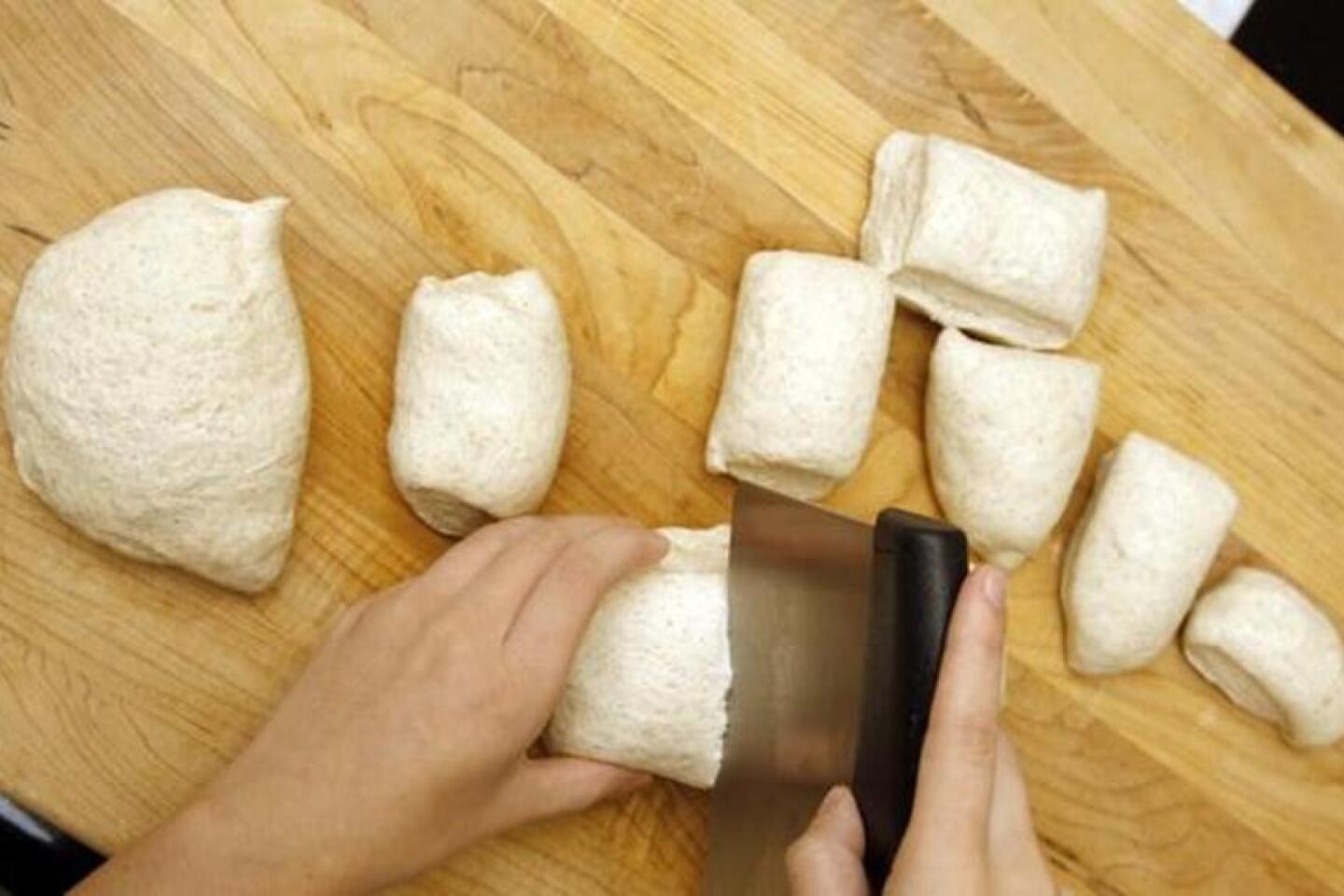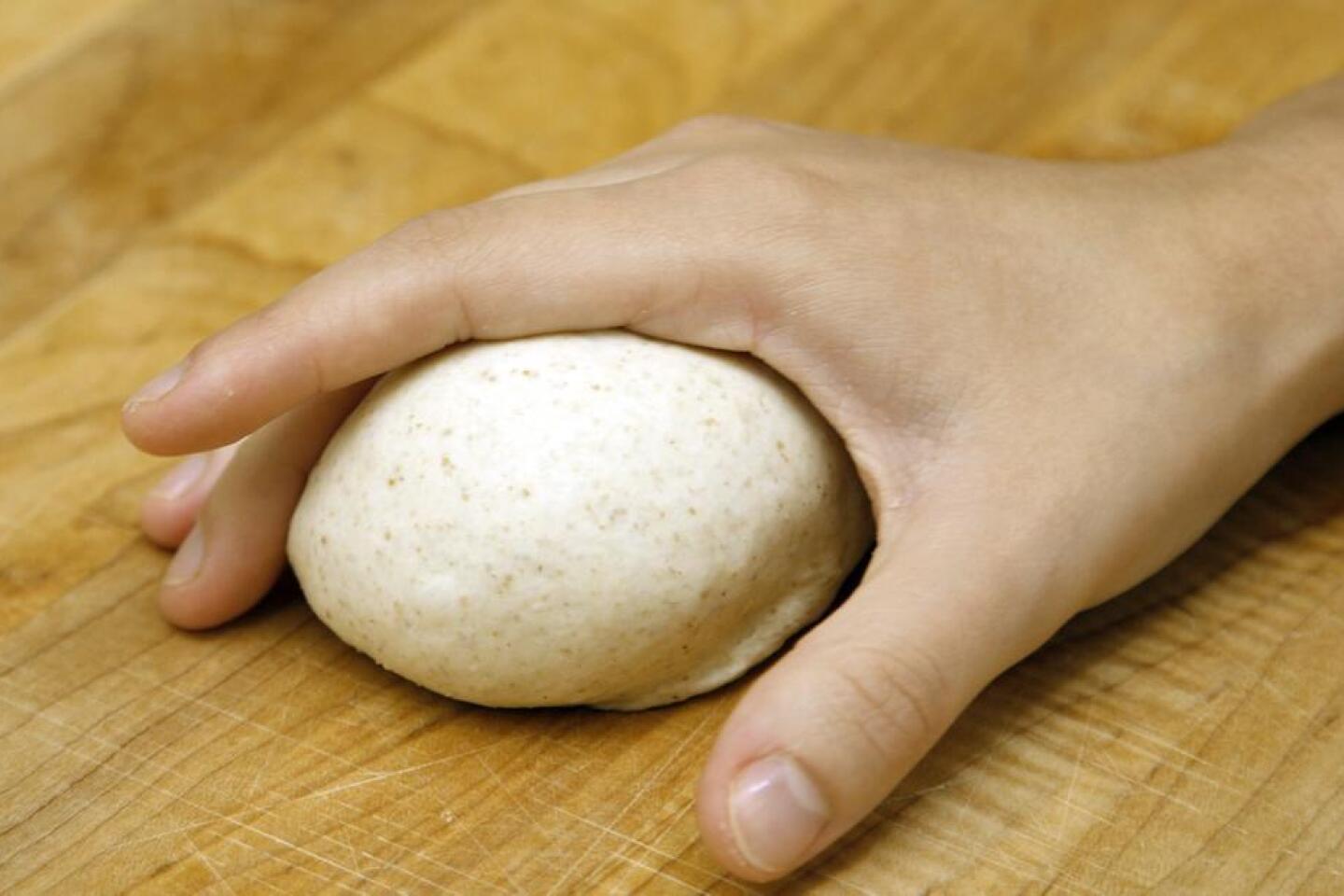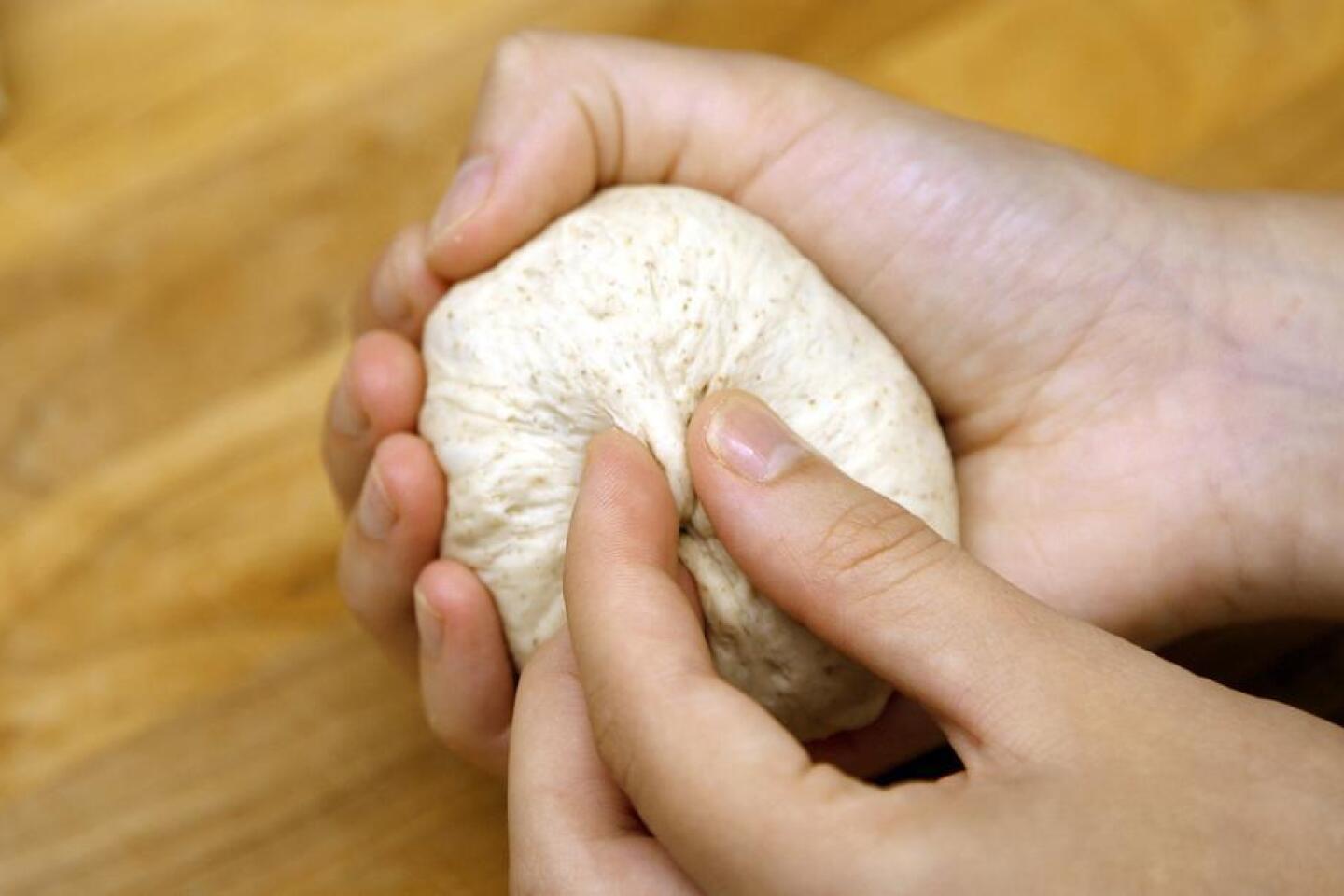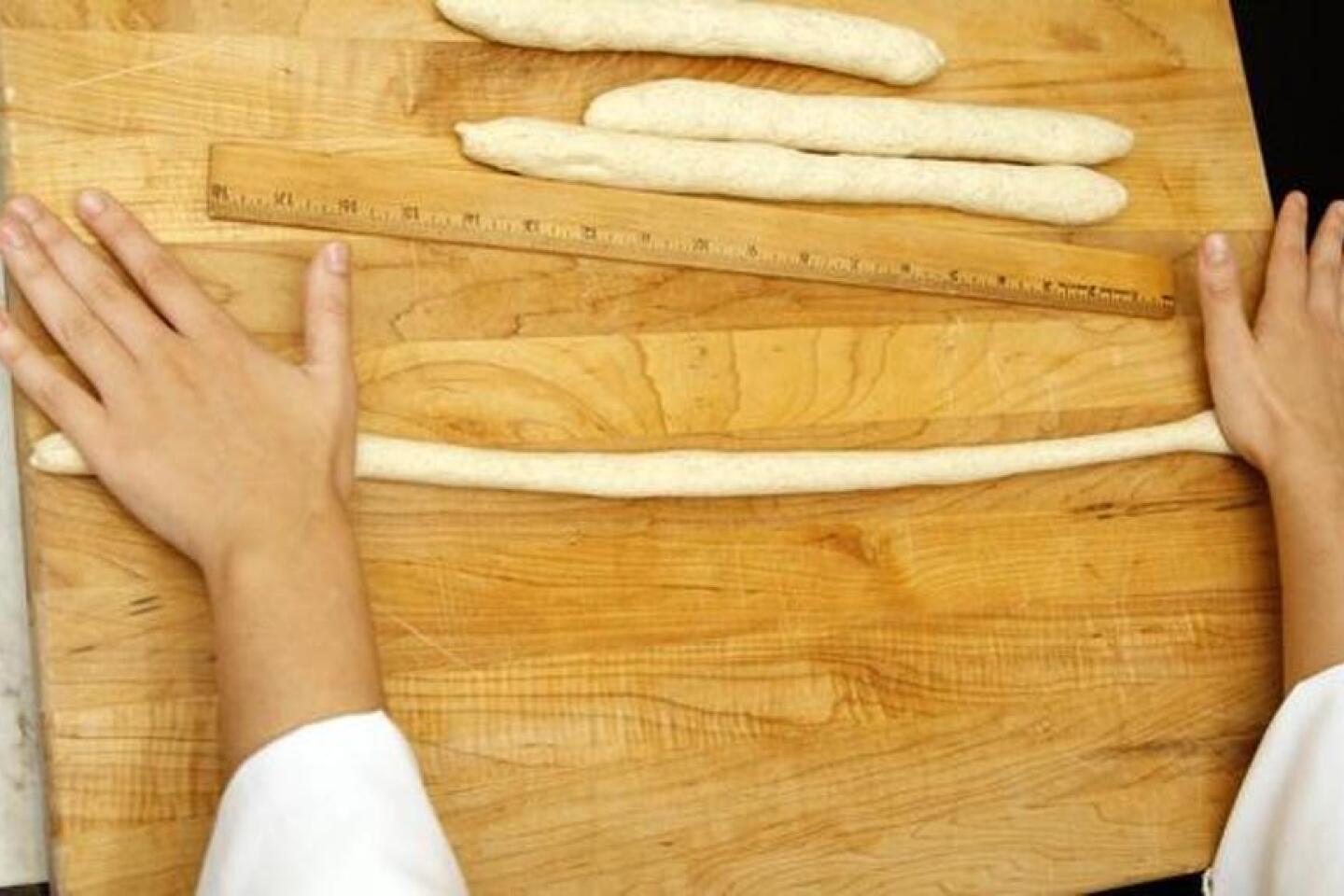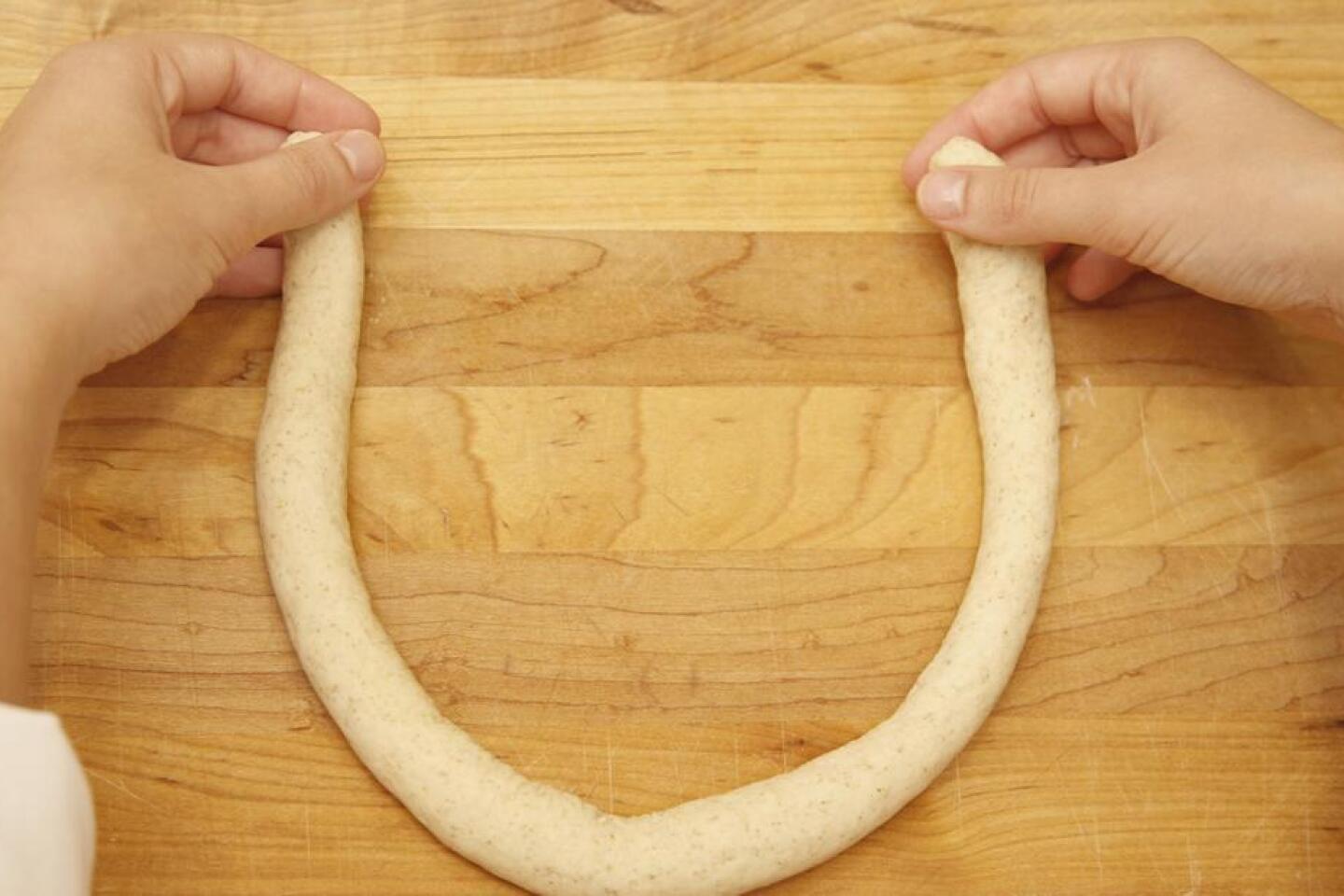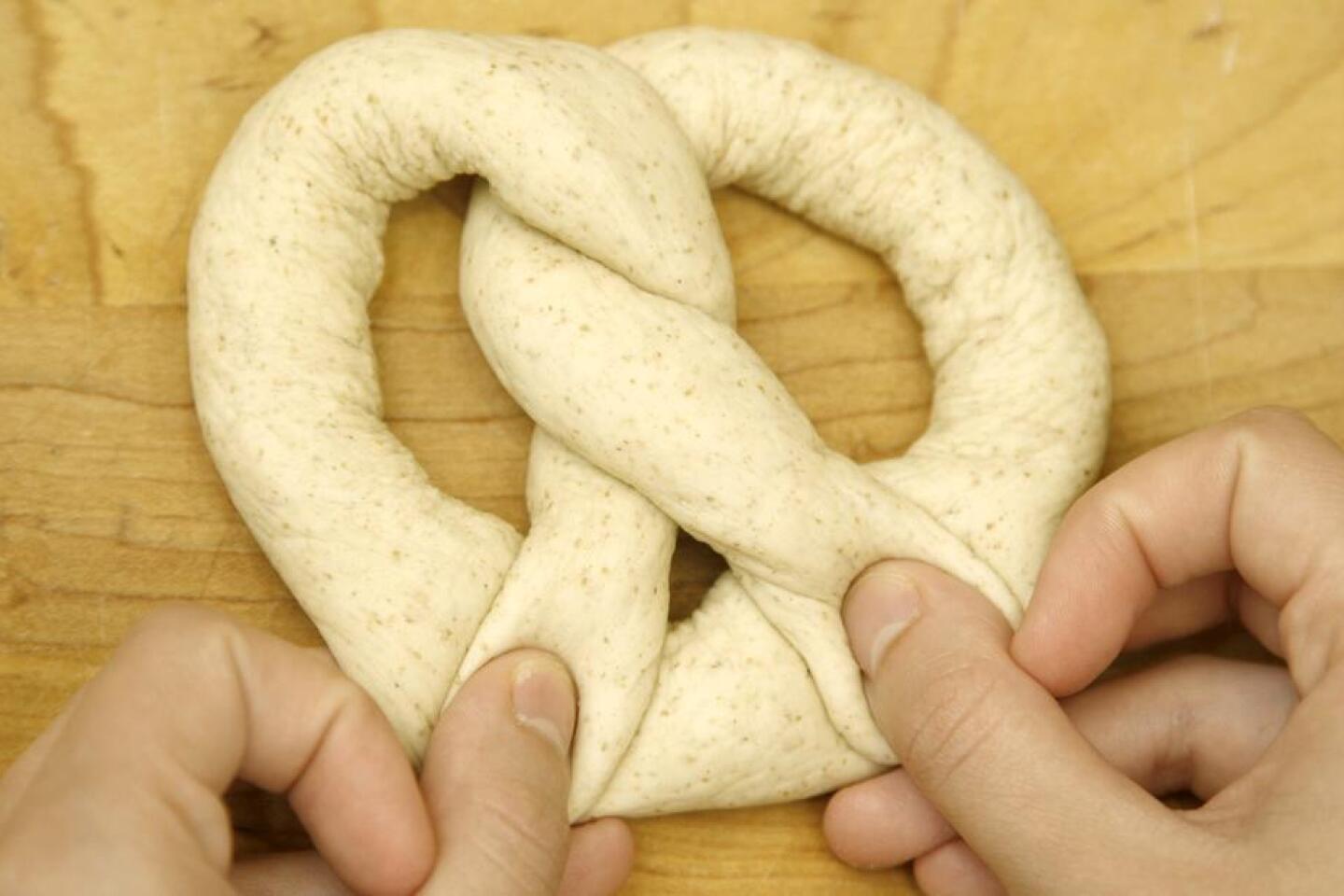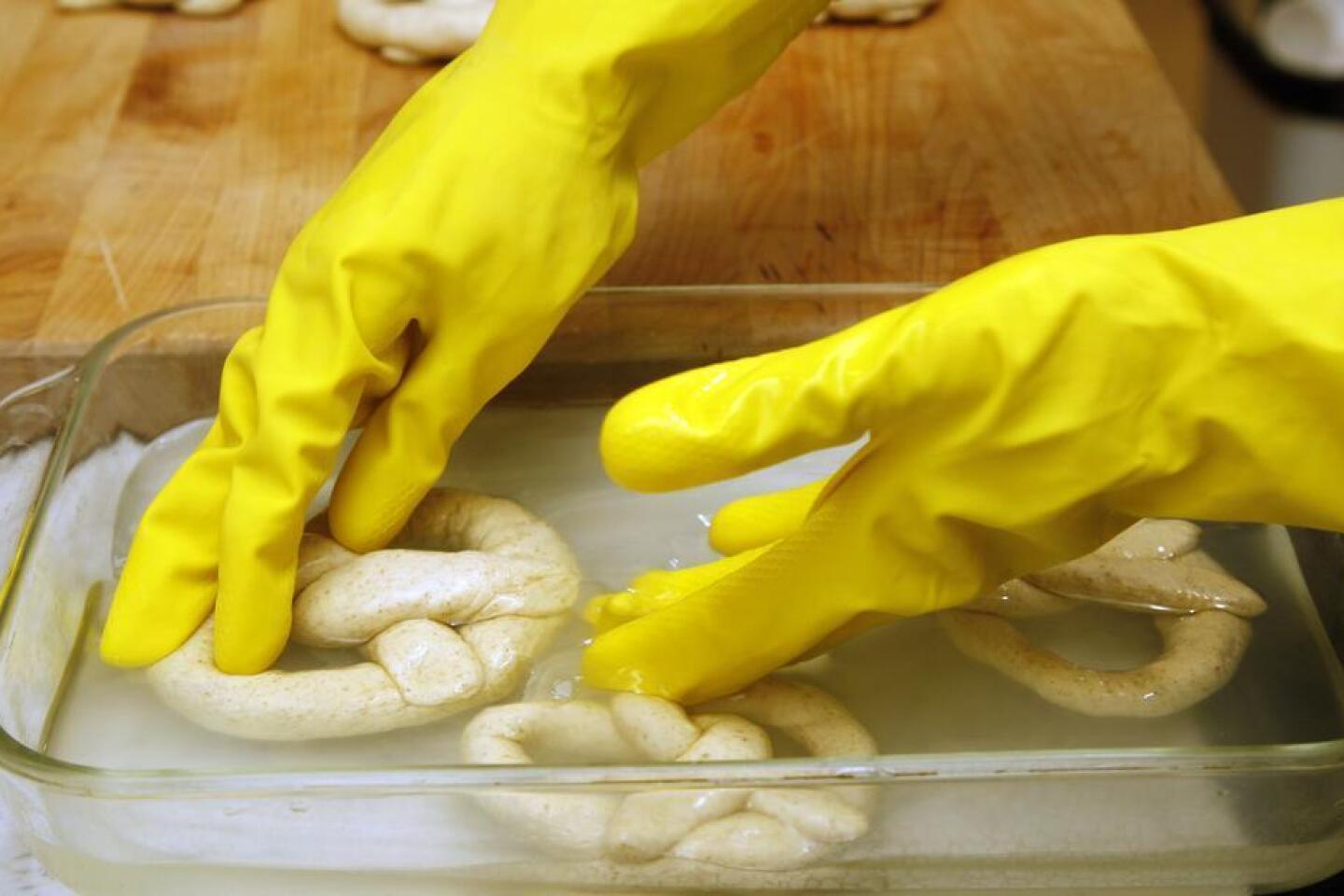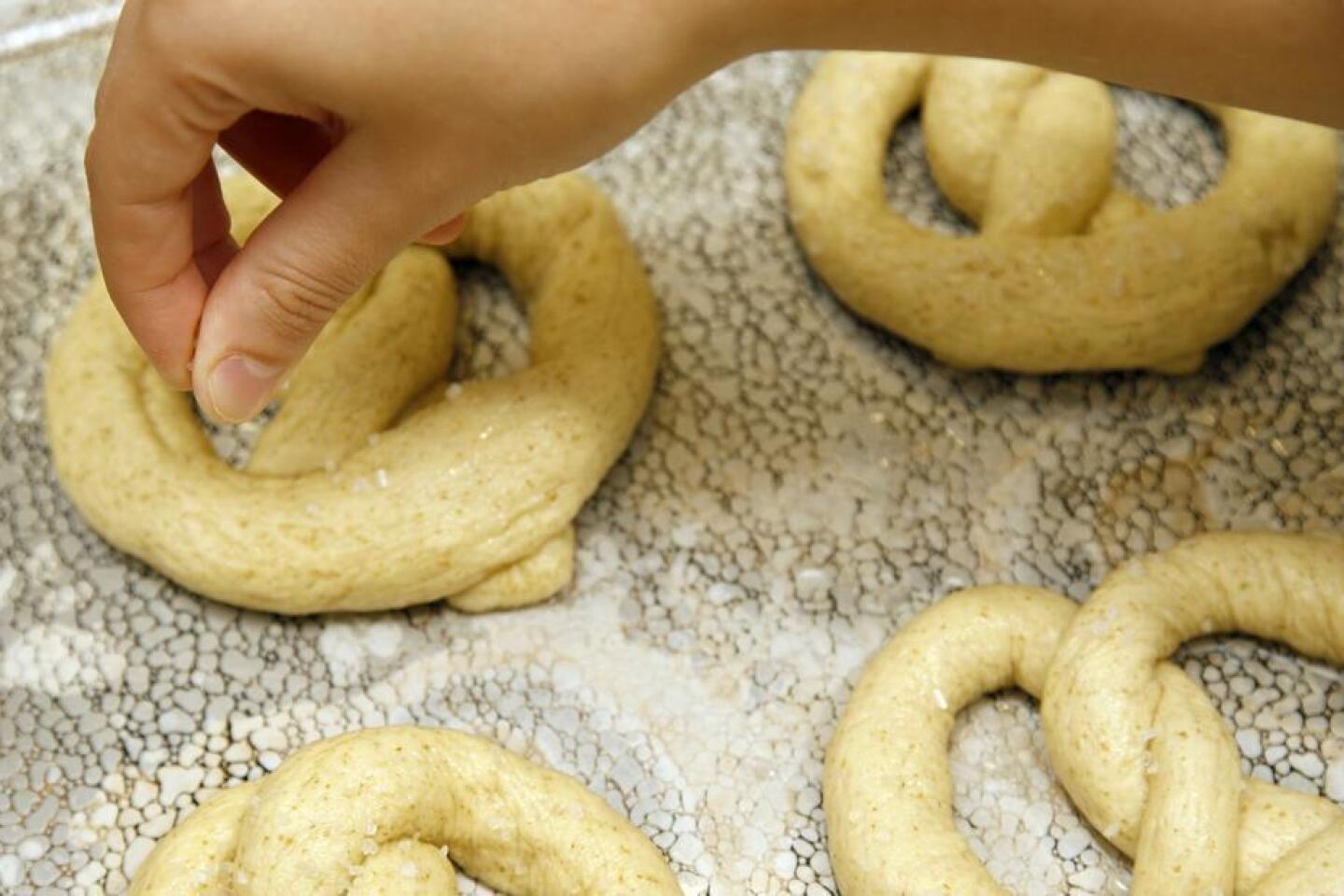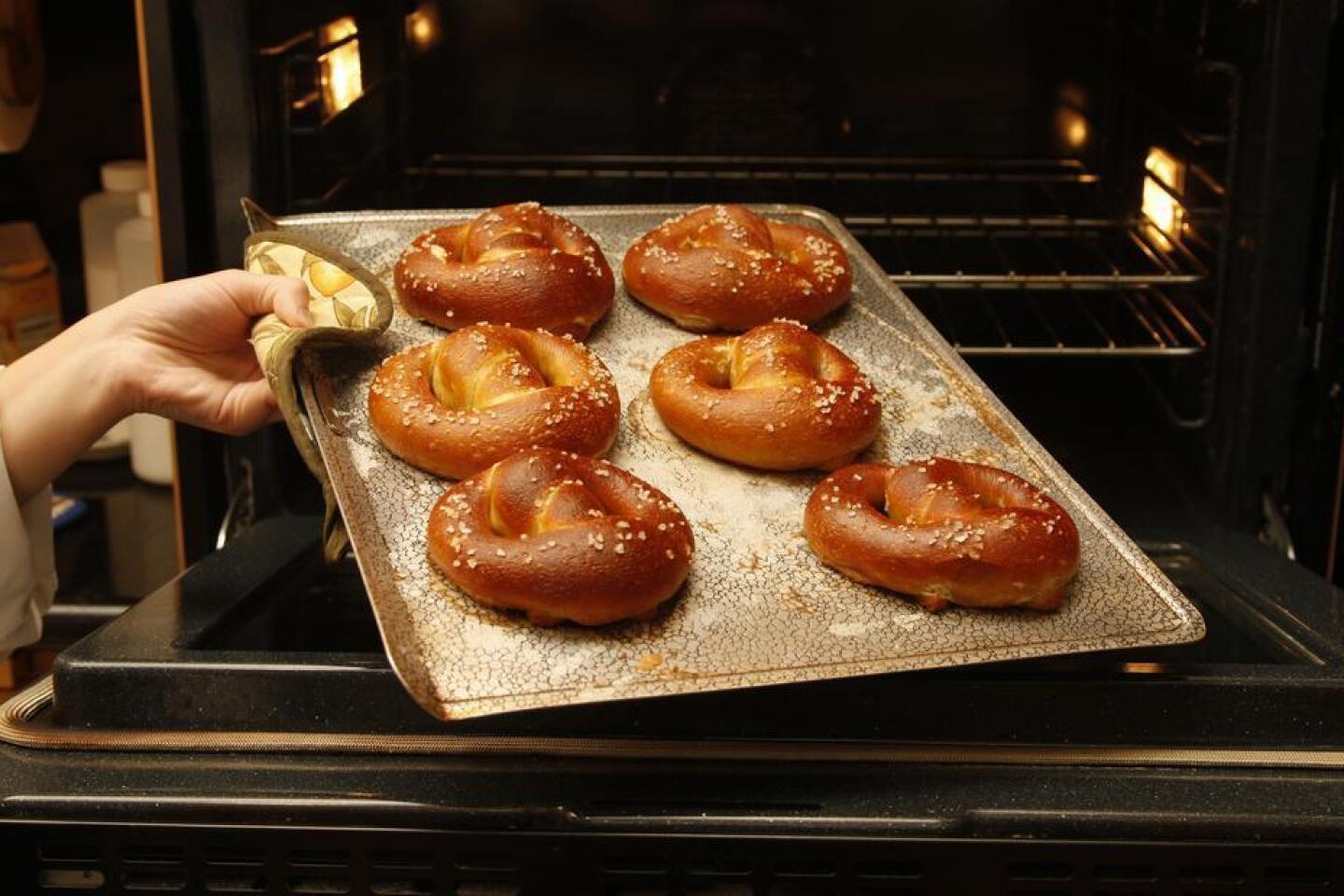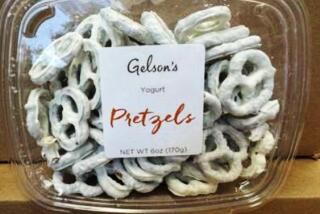How to make the softest pretzels and more recipes
- Share via
The other day I was sitting at a local bar catching a game of football with a friend. The bartender handed us a bowl of pretzels. Noshing on a few over a beer, I got to thinking.
I can’t remember the last time I had a really great pretzel. Freshly puffed and temptingly aromatic, they’re the ones with the deep brown sheen that — if you’re lucky — you get still warm, the large specks of salt catching the light just so as they’re slid out of the oven.
Chance upon a good bakery at the right time, and you might be able to snag one. But homemade? Until recently, I simply didn’t think it was possible. But I couldn’t shake the thought of trying. It took a little trial and error, but I’ve found the process is surprisingly easy (well, except for twisting them in the air — like flipping pizza dough, that takes practice).
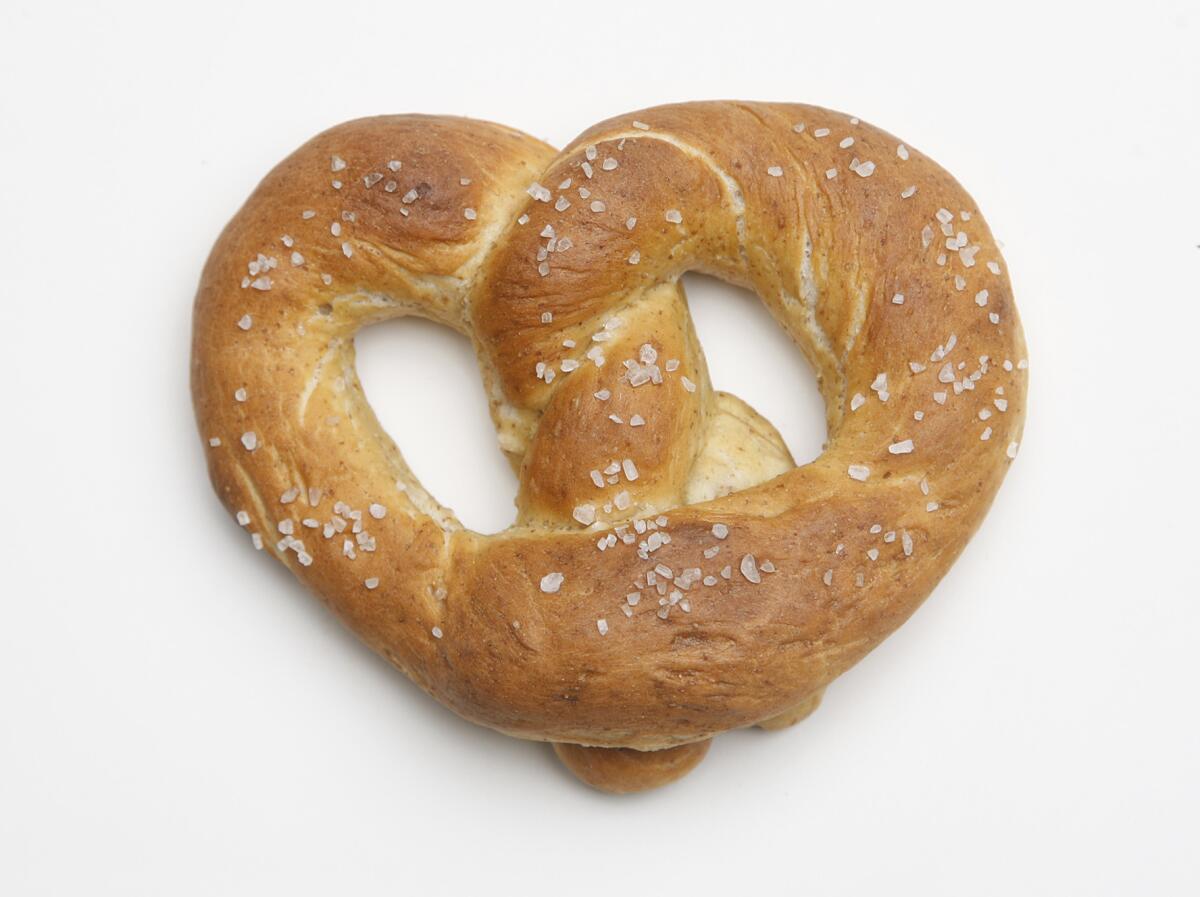
The secret? Lye.
The dough is simple; take a basic yeast-risen dough that can be readied in an afternoon. But the trick to great pretzels is dipping the pretzels in a liquid wash before baking — and not just any wash, but a combination of water and lye. That’s what gives pretzels their terrific color, texture and flavor.
Hear the word “lye” and you probably think of commercial drain opener. A powerful alkali, lye (typically sodium hydroxide or potassium hydroxide) is often used in heavy cleaning and soap making, and it can be highly corrosive.
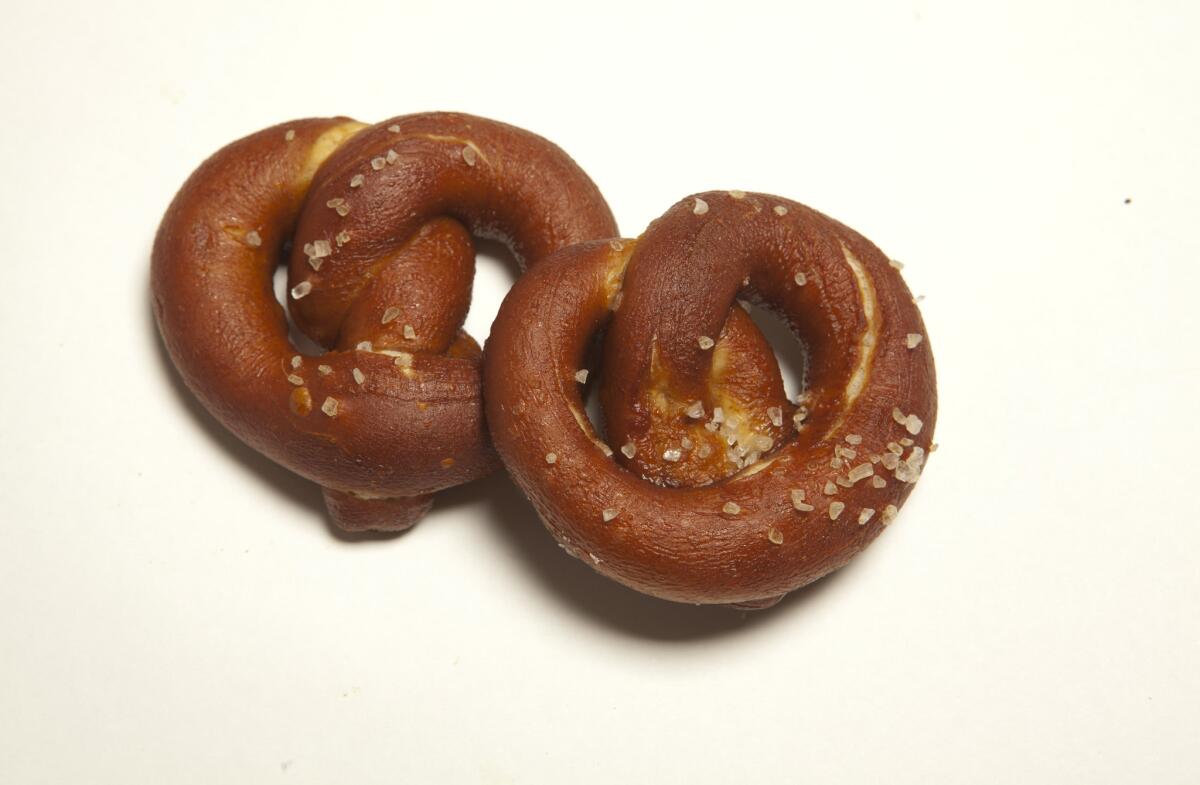
When shopping, look for food-grade lye; it’s of a higher quality than technical-grade lyes (what you might find at a hardware store), meaning it has lower levels of heavy-metal impurities (mercury, nickel, etc.). It can be hard to find at the grocery store, but it’s easy to find online. I got it from Essential Depot.
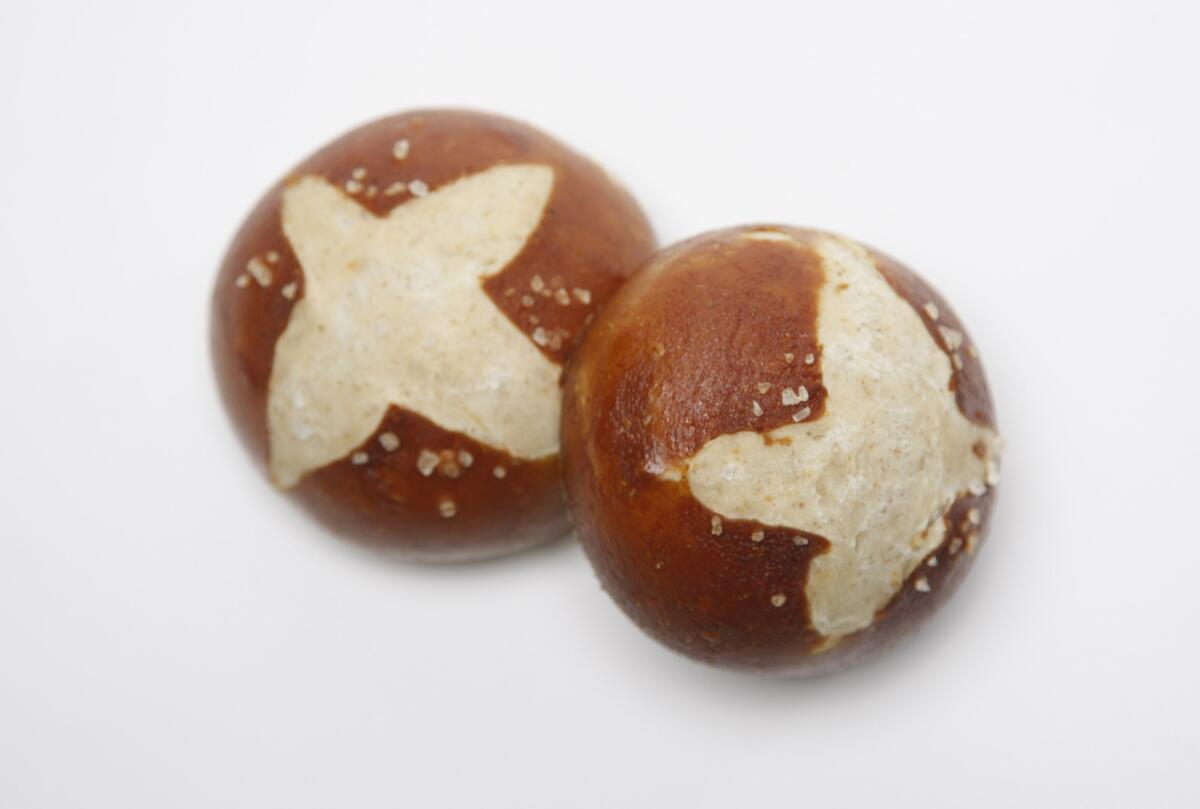
With pretzels, the dough is dipped in a very mild solution of lye; most sources I found call for a 3% solution, which is about 2 tablespoons (1 ounce) of lye dissolved in a quart of water. When the pretzel is dipped in the solution, the lye immediately begins to react with the surface of the dough, yellowing it. As it bakes, the color intensifies and turns a deep, glossy brown, the pretzel taking on a crisp, chewy texture. The alkali is neutralized in the process, making the pretzel safe to eat.
The alkaline environment also promotes the Maillard reaction, that familiar chemical process that leads to browning of such foods as bread, steaks and French fries.
Of course, lye is powerful, and if not used properly it can be dangerous. You should always wear gloves and goggles when working with lye; it is caustic and can burn if it comes in direct contact with your skin. I didn’t pay attention to the warnings when I first used it on the pretzels and, even at that mild concentration, my hands stung for days.
If you’re not comfortable using lye, there are alternatives. I tested the recipe with other washes to see how they compared. A baking soda (mild alkaline) wash creates a noticeable change in color, texture and flavor but there is no sheen, and the results are not as dramatic as lye. An egg white wash provides a clear sheen, though it doesn’t do much for color or texture. Whole eggs give wonderful sheen and color, though they won’t produce the same crust and flavor you would get from an alkaline-based wash.
I also tested the recipe with a “baked soda” wash. Food science writer Harold McGee recommends baking regular baking soda to increase its alkalinity. As baking soda (sodium bicarbonate) is heated, it undergoes a chemical reaction, forming sodium carbonate. The pretzels had better flavor and color than the other alternative washes, but it’s still not the same as lye.
Soft pretzels bake in almost no time, 10 to 15 minutes, give or take, depending on the size. Serve them right away: Soft pretzels are best straight out of the oven; they just don’t taste as good after they’ve sat around. For hard pretzels, roll them a little thinner and make them smaller (a giant hard pretzel is just awkward) and bake them at a slightly lower temperature for a longer period of time to dry them out.
Homemade mustard recipes? We got you covered
Or try something a little different. Just the other evening I tried shaping pretzels in a rustic Swabian style, with thin little arms and a fat “belly,” a slash splitting the center. Hot as they were, I couldn’t help but grab one just out of the oven, and take a bite. The crisp skin almost snapped as I bit through the center, giving way to a slightly chewy center. Soft as the center was, the little arms had dried and hardened to an amazing crunch. Worlds away from any sort of bar snack, this was a memorable pretzel.
More to Read
Eat your way across L.A.
Get our weekly Tasting Notes newsletter for reviews, news and more.
You may occasionally receive promotional content from the Los Angeles Times.
